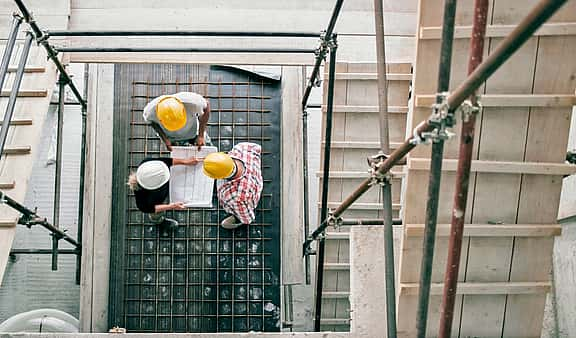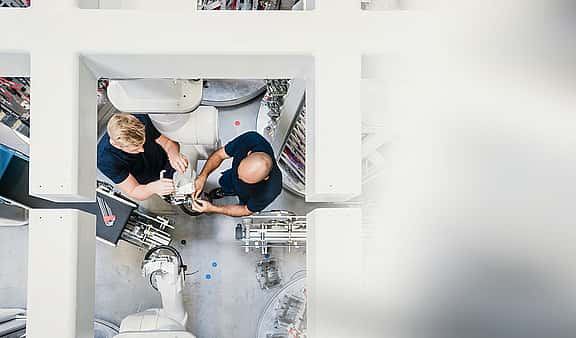Innovation is happening all around us and the architecture industry is no different. New technology and applications within this industry have made the architect's job a bit easier and at the same time more challenging. To thrive in today’s society, architects need to adapt and get adhered to the upcoming technologies within their industry, otherwise they could be left behind. Whether it’s more affordable housing or ultra-modern vertical cities, architects are turning to technology to help them design the structures of the future. From site study to a final virtual experience beforehand, everything is now possible with technology. Here is a list of some of the key technological innovations within the architecture industry:
3D Printing
When it comes to modern technology 3D printing is one of the most exciting technologies available to architects. While most common uses of 3D printing involve smaller machine parts. Architects use 3D printing to create prototypes of buildings still in the development and design stages. It saves time and labour when creating models, especially if a client makes any updates or changes to the plans. Thanks to advanced printing technology, these models are high-quality and you can customise them in a range of materials and colours.
3D printing technology has been around for a few years now, but it’s only recently that it has become more affordable through leasing and accurate enough to be used in architectural projects.
Furthermore, architects have already begun using 3D printing to build full-scale structures at a greater speed and only a fraction of the cost of regular construction. There have been trials of houses being built by this technology by a few countries by now and this can really spark a new trend in architecture in the coming years.
Virtual Reality
Virtual reality (VR) is another area which is rapidly evolving and gaining in popularity among architects. VR allows architects to create a digital model of a building, virtually walk through it and observe how it looks and feels from the inside. This can be useful for checking the feasibility of design ideas, as well as for marketing purposes.
VR allows architects to better explain their ideas and concepts to their clients in a real-life-like experience. While virtual tours will always be popular, giving clients the ability to physically walk through space, VR can make a huge difference in the planning and design stage and save money and time on small changes.
With just the press of a button and the darkness of a headset, everybody from project members to clients can explore the building in question, taking a closer look at floors, ceilings, and entire building designs. Not only does this spark interest in the project more than a classic 2D image could, but it also gives plenty of room to request changes or suggest alterations before the project starts.
In exchange for relatively low start-up costs through leasing, VR can give you a competitive edge, allow for real-time changes, and reap the rewards of an impressed client.
Artificial Intelligence
Artificial Intelligence (AI) presents several opportunities for architects who can use it to help with the design process. AI can be used to generate new ideas for buildings or to help with the selection of materials and finishes. What’s more, AI could be used to carry out building inspections and diagnose problems.
Much of the manual work has been replaced by AI and it has been found to increase optimisation by efficiently considering all respects from weather and site conditions to experiencing virtual walkways.
Planning and designing a building involves much more than putting pencil to paper. Architects must navigate a host of data to design and construct buildings. As an emerging technology, AI has become instrumental for architects, helping them wade through tons of data and assisting in analytics that help estimate various aspects of construction.
Augmented Reality
Augmented reality is another tech advancement in architecture that is gaining traction. While similar to virtual reality, AR inserts digital elements into the real world rather than creating a completely virtual environment. This can be used to create some really impressive effects, such as making it look as if buildings are coming alive.
The origin of the word augmented is “augment”, which means to add something, and this is what makes it different from virtual reality. Virtual reality creates the environment itself using technology. On the other hand, augmented reality uses the existing environment and adds up new layers to it.
In conclusion, new innovations in these technologies are coming simultaneously which begs the question, how do I know that I’m investing my capital in the most efficient manner? This is where Grenke comes in as they can provide all the latest equipment to those interested and remove any worry that companies may have when investing their capital in new equipment which could inevitably be updated in a few years time.
Talk to GRENKE today!
As one of the leading financial service providers in the Irish market, GRENKE’s slogan is ‘Fast, Forward, Finance’. GRENKE offers entrepreneurs fast and flexible financial solutions through a range of services including leasing and invoice finance. We match the perfect financial solution to your unique business needs, from small businesses to large enterprises.
Over the last 40 years, GRENKE has provided leasing to numerous styles of businesses and organisations; sole traders, partnerships, public and private limited companies, associations and organisations, medical, health, and educational providers, public hospitals, semi-state institutions, Government bodies and so much more.
Our expertise and strong market position are no coincidence. If you are a business owner looking for financial solutions in Ireland or advice on fast and flexible financing, talk to a GRENKE Account Manager today.











